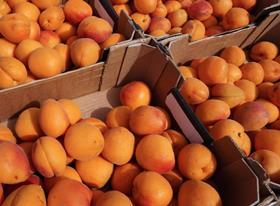
Apricot volumes in Europe’s main production areas are expected to rise 12 per cent on last year to over 632,000 tonnes following disappointing harvests last year.
Preliminary forecasts from Europêch’, presented at Medfel in Perpignan, revealed that Europe’s biggest producers, France and Italy, are forecast to return to normal levels with volumes set to increase by 43 per cent and 36 per cent respectively.
This follows poor harvests in 2018 when production was badly affected by frost, rain and hail.
Production in Greece is forecast to remain stable (up one per cent), and only Spain will see its production decrease, with volume predicted to fall by 36 per cent after a strong season last year.
The total European harvest is set to be 19 per cent higher than the 2013-17 average – an estimate that Europech stressed was only provisional at this stage in the season.
In Italy, Europe’s largest apricot producer, volumes are set to rise from almost 213,000t to over 286,000t thanks to favourable winter conditions with adequate cold hours.
Production should therefore be significantly higher than in 2018, when volumes were low, both in the north and the south of the country, in regions such as Emilia-Romagna, Puglia and Campania.
Tomas Bosi from the CSO cooperative in Ferrara reported that there had been no major problems during flowering and that generally the setting of the fruit had been good. He expects Italian volumes to return to 2017 levels this season.
Meanwhile, in Spain and the French region of Languedoc-Roussillon, a mild winter has led to a lack of cold hours for some varieties, which is likely to cause production deficits.
Frost at the end of February has also affected Spanish production, particularly in Castile-La Mancha and Murcia.
Europêch’ noted that the planted area of apricots has increased in Europe in the past decade following difficulties in European peach and nectarine markets, with growers switching from peach to apricot production.
Italy and above all Spain have seen their production area increase, which has boosted sales, and particularly exports.
France, which has previously occupied a strong position in the European market, has found it difficult to cope with this rising competition from Italy and Spain, and has been forced to rely more heavily on its domestic market, resulting in an imbalance between supply and demand and therefore a drop in prices.



